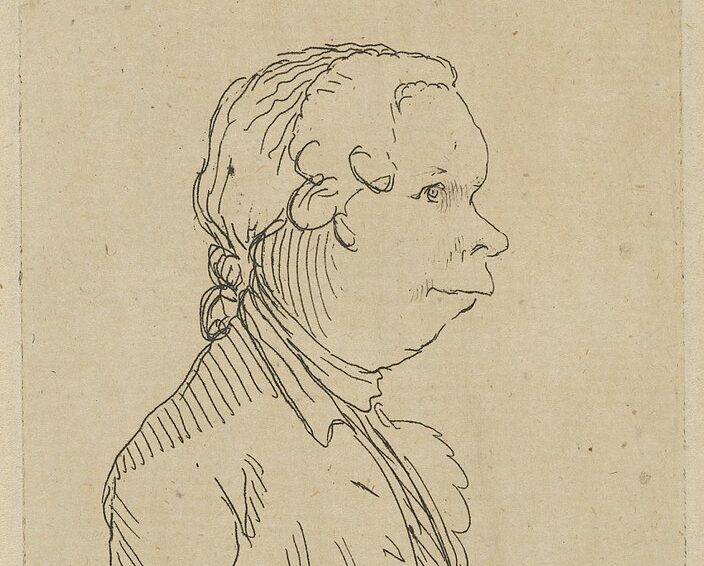Foreigners who have visited the Netherlands throughout the ages have not always been very complimentary about it. There’s a lot of moaning about slow barges and fat and prosperous Dutch burghers but others were happy to find refuge there and study at the prestigious Leiden university. Here are some of their impressions.
Julius Caesar He was in the Netherlands, but we haven’t even a “veni vidi vici” to show for it. Julius Caesar was in Kessel in Brabant to be precise, where he smote two Germanic tribes in 55 AD. He mentioned “Batavians living between the Maas and the Waal” in his De Bello Gallico and then went on to order not only the men but the women and children to be slaughtered.

He didn’t say much else about it but then he was busy trying to conquer Gaul. Voltaire The writer and essayist (1694-1788) travelled to the Netherlands no fewer than four times , the first time because, at age 19, he was being a pain in the behind at home and his father wanted rid of him. Nine years later, and now a pain in the French authorities’ behind, he published Le Henriade in the tolerant Netherlands.
The third time, he returned to find refuge from persecution following his Lettres Anglaises . The fourth and final time, in 1740, he came to purloin, by hook or by crook, a manuscript written by his friend Frederik II containing indiscretions. On leaving with a flea in his ear and smarting from the deceit of his Dutch publisher Van Duren he said the far from complimentary: “Adieu canards, canaux, canailles!”, or “Farewell ducks, canals, villains”.
To be fair, he did also say he preferred the Dutch freedom of the press to “the stifling of the human spirit in France”. Denis Diderot Fellow Frenchman and author of the Encyclopédie des Arts et des Métiers Denis Diderot (1713-1784) came to the Dutch republic in 1773 and 1774 en route to somewhere else, and wrote down his impressions in Voyage en Hollande. He observed “The sight of a fat Dutchman, a constant pipe in his mouth, fed on butter and milk, will bring to mind an alembic in the process of distilling.
” Smoking, the climate and the food played havoc with the teeth of the Dutch, he said. Oliver Goldsmith English author Oliver Goldsmith (1728-1774) is said to have spent a year in Leiden ostensibly studying. Here he is in a letter to his uncle.
“The modern Dutchman is quite a different creature from him of former times; he in everything imitates a Frenchman but in his easy, disengaged air. He is vastly ceremonious, and is, perhaps, exactly what a Frenchman might have been in the reign of Louis XIV. Such are the better bred.
“But the downright Hollander is one of the oddest figures in nature. Upon a lank head of hair he wears a half-cocked narrow hat, laced with black ribbon; no coat, but seven waistcoats and nine pair of breeches, so that his hips reach up almost to his armpits. “This well-clothed vegetable is now fit to see company or make love.
But what a pleasing creature is the object of his appetite! why, she wears a large fur cap, with a deal of Flanders lace; and for every pair of breeches he carries, she puts on two petticoats.” James Boswell Samuel Johnson’s sidekick and rake James Boswell (1740-1795) was not pleased to leave the mostly carnal pleasures of London for Utrecht in 1763 where he was expected to study law. He nevertheless seems to have had a good time in the Netherlands, making friends and learning “een beytie Hollansche” so as to be able “to converse with the Hollanders” although the language of the elite at the time was French “Terwyl ik bin van voomemens om de hollansche taal te leeren, dat is te zeggen: Terwyl ik hebben lust te minsten een beytie te leeren zoo dat ik can met de Hollanders conversatie hebben, zoo heb ik geresolveer’d alle daag een beytie in dat taal te schryven”.
And his inburgering was complete when he wrote : Heinrich Heine ‘If the world were about to come to an end I would go to Holland where everything happens 50 years later,” German poet Heinrich Heine (1797-1865) said . He was referring to the the abolition of slavery in the Dutch colonies in 1863 which put the Dutch at the back of the queue of West-European states to do so. Heine came on a short visit to the Netherlands and loved the “bokking and blondines” (smoked herring and blondes) he encountered , although the latter he reportedly admired from a distance being the shy and retiring type.
Claude Monet French Impressionist painter Claude Monet(1840-1926) visited the Netherlands three times between 1870 and 1881. Monet had clearly been told that the country was boring and flat but he didn’t agree. This is what he wrote to his painter friend Camille Pisarro.
“We have travelled the length and breadth of the Netherlands and what I have seen of it is truly much more beautiful than I had been led to believe. Zaandam is very special and there is enough to paint here to last a lifetime. (.
.) My impression of the Dutch is one of pleasantness and hospitality.” Monet painted some 25 works in Zaandam where he and his family stayed for four months.
He also worked in Amsterdam but is said to have been unhappy about his depiction of the ‘Amsterdam light” and was commissioned, by the French authorities, on his final trip to paint the tulips in bloom. Henry Miller American writer Henry Miller had some more demented observations about the Netherlands after his trip in Aller Retour New York (1935). The Dutch, he said, “are filling in the Zuiderzee because it does not pay just to have skating in winter.
The sugar, by the way, is made of cane and very coarse. The milk is not skimmed. The potatoes are greasy.
The meat is always soup meat. The beer is Heineken beer and does not give you a headache. The beer is taken after meals.
The spittoons are rinsed twice a day, oftener if necessary.” As for the language, Miller said, the Dutch tongue was coming to him rather naturally “because of my low parentage”..



















